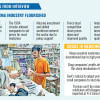Pharma must collaborate with academia to thrive in post-LDC era

The pharmaceutical sector in Bangladesh stands at a turning point. From a heavily import-dependent industry in the 1980s, it now meets 98 percent of domestic medicine needs and exports to over 150 countries. In FY2024-25, export earnings from this sector reached $213 million. Its success has been largely driven by the Trade-Related Aspects of Intellectual Property Rights (TRIPS) waiver under the World Trade Organization (WTO), which allowed the production of generic versions of patented drugs.
However, with Bangladesh set to graduate from the Least Developed Country (LDC) category by November 2026, the TRIPS flexibilities and other international exemptions are set to come to an end. This shift could significantly limit local production of patented medicines, raise drug prices—especially for newer treatments—and reduce export potential. Public health programmes that rely on low-cost generics may come under budgetary strain. Meanwhile, the domestic pharmaceutical industry will need to meet stricter international regulatory standards like those of the US Food and Drug Administration, European Medicines Agency and World Health Organization-Good Manufacturing Practices (WHO-GMP), and compete in a more complex global market. Gaps in biotechnology, active pharmaceutical ingredient (API) production, and clinical trial infrastructure will further intensify these challenges.
To navigate the post-LDC era successfully, Bangladesh must transition from a volume-driven, generics-dominated model to one centred on innovation, quality, and global integration. This can be achieved by enhancing collaboration between industry and academia. Academic research in the country has traditionally remained disconnected from industry needs. Underfunded labs, outdated infrastructure, and limited engagement from the private sector have weakened universities' role as innovation hubs. The disconnect is evident in pharmaceutical education and research. Collaboration is hampered by theoretical research orientations, outdated curricula, and the absence of mechanisms like technology transfer offices. Applied research funding is scarce, and expertise in emerging fields like biotechnology, regulatory science, and clinical trials is limited.
Meanwhile, firms often avoid collaboration, focusing on short-term gains rather than long-term innovation. Many are reluctant to invest in joint research, curriculum development or workforce training. The lack of structured platforms for engagement, along with concerns over intellectual property and limited demand for high-end scientific expertise, further weakens cooperation.
A national strategy to bridge these divides is needed, along with investment in joint research initiatives that can drive pharmaceutical innovation and resilience.
Tertiary institutions, particularly departments of pharmacy, biochemistry and molecular biology, genetic engineering and biotechnology, microbiology, and health economics institutes, can partner with pharmaceutical companies to develop biosimilars and new drug formulations. Industry-supported clinical trials hosted in academic settings can reduce dependency on foreign labs, lower research and development (R&D) costs, and speed up product development. Faculty members should be incentivised to pursue industry-relevant research through consultancy, collaborative grants, and performance-based rewards.
Workforce readiness is another pressing issue. Many employers think graduates lack the skills they are looking for. University curricula should be redesigned in consultation with pharmaceutical firms to include regulatory science, bioequivalence studies, GMP compliance, data analytics, and advanced manufacturing practices. Internship and co-op programmes can offer students real-world industry exposure, while faculty exchanges with industry can help keep teaching aligned with evolving demands.
Creating centres of excellence (CoEs) focused on pharmaceutical innovation is another strategic option. Drawing from India's National Institute of Pharmaceutical Education and Research (NIPER) model, Bangladesh can establish CoEs dedicated to biotechnology, API manufacturing, clinical research, and regulatory affairs. These centres can help reduce reliance on imported APIs and strengthen the country's capacity for global-standard clinical trials. Public-private partnerships involving government, academia and industry could sustain these centres financially and institutionally.
The clinical trial infrastructure in Bangladesh remains significantly underdeveloped. Existing clinical research organisations (CROs) struggle with ethical approval delays, a lack of qualified principal investigators and biostatisticians, and difficulty recruiting trial volunteers. These shortcomings force companies to outsource trials abroad, increasing costs and delaying market entry. By investing in accredited research facilities and university-based ethical review boards, Bangladesh can localise clinical research. Additionally, industry-funded training programmes in trial design, regulatory compliance, and data management can strengthen research capacity.
Academia must also play a central role in evidence-based policymaking. As Bangladesh adapts to post-LDC trade and intellectual property (IP) requirements, academic institutions can assess the economic impacts of patent compliance, propose sustainable pricing models, and help design national strategies. Establishing formal "policy labs" that bring together academics, industry leaders, and regulators could facilitate coordinated, evidence-informed decision-making. In international forums, academic voices can also advocate for equitable IP policies and targeted transition support for countries like Bangladesh.
To realise these goals, structural reforms are urgently needed. Bureaucratic bottlenecks, mutual mistrust, and misaligned incentives must be replaced with a supportive national framework for industry-academia partnership. This framework should include tax incentives, R&D grants, and co-financing mechanisms for joint initiatives. Universities should be empowered to commercialise intellectual property and engage in contract research. Performance metrics for academic institutions must evolve to reward patents, industry impact, and product innovation alongside traditional publications. Clear policies for IP ownership and benefit-sharing can also help foster mutual trust and long-term cooperation.
If policymakers, academic leaders, and industry stakeholders act with urgency and coordination, Bangladesh can build on its pharmaceutical legacy and emerge as a global leader in affordable, innovative healthcare solutions. The core foundations are already in place; what's needed now is the shared commitment to build on them strategically.
Dr Syed Abdul Hamid is professor of Institute of Health Economics at the University of Dhaka, convener of Alliance for Health Reforms Bangladesh (AHRB), and initiator of the Network for Healthcare Excellence (NHE).
Views expressed in this article are the author's own.
Follow The Daily Star Opinion on Facebook for the latest opinions, commentaries and analyses by experts and professionals. To contribute your article or letter to The Daily Star Opinion, see our guidelines for submission.

 For all latest news, follow The Daily Star's Google News channel.
For all latest news, follow The Daily Star's Google News channel. 










Comments